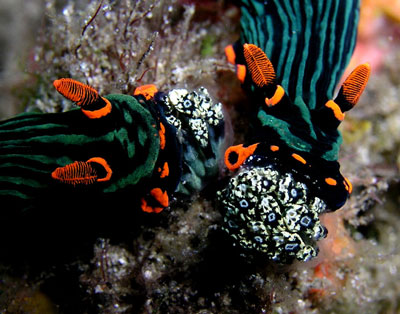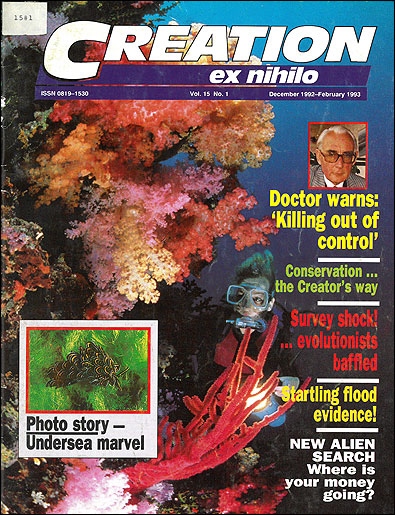Sea slugs leave Darwin’s theory slipping

There are many strange creatures living in the sea, but few stranger than the Nudibranch Sea Slug. And there are few whose design is more damaging to the theory of evolution.
Sea slugs mainly eat sea anemones, which are covered with stinging cells that normally burst at the slightest touch, firing poison darts at the creature which touched them. The sea slug, however, is able to tear sea anemones apart and swallow the stinging cells without bursting them!

Even more amazing is what happens to the stinging cells when they reach the sea slug’s stomach. There are tiny tubes lined with moving cilia (hairs), which link the stomach to waving spurs on the sea slug’s back. The sea anemone’s stinging cells—so fatal to other organisms—are transported from the stomach, up those tiny tubes, to the tips of the spurs. There the sea slug stores those stolen weapons to use in its own defence, shooting them at any fish which dares to attack it!
Is it possible to imagine an evolutionary scenario for the development of the sea slug’s amazing mechanisms? Let us suppose that at some time in the past, a sea slug happened to attack and tear up a sea anemone without getting a lethal dose of poisoned darts. Let us further suppose—against all the odds—that it was somehow able to swallow the stinging cells without bursting them.

Without those special tubes, and moving hairs, to transport the stinging cells to the spurs on its back, the sea slug would have been doomed. Every part of the sea slug’s complex mechanism had to be complete, right from the beginning, to ensure its survival. Millions of years would make no difference, because if the sea slug’s protective mechanisms were not perfectly operating in its first attack on the sea anemone, it would have died.
In his Origin of Species, Charles Darwin wrote: ‘If it could be demonstrated that any complex organ existed which could not have been formed by successive, slight modifications, my theory would absolutely break down.’
The sea slug leaves Darwin’s theory in ruins. The only logical explanation for the origin of this amazing creature is special creation!





Readers’ comments
Comments are automatically closed 14 days after publication.